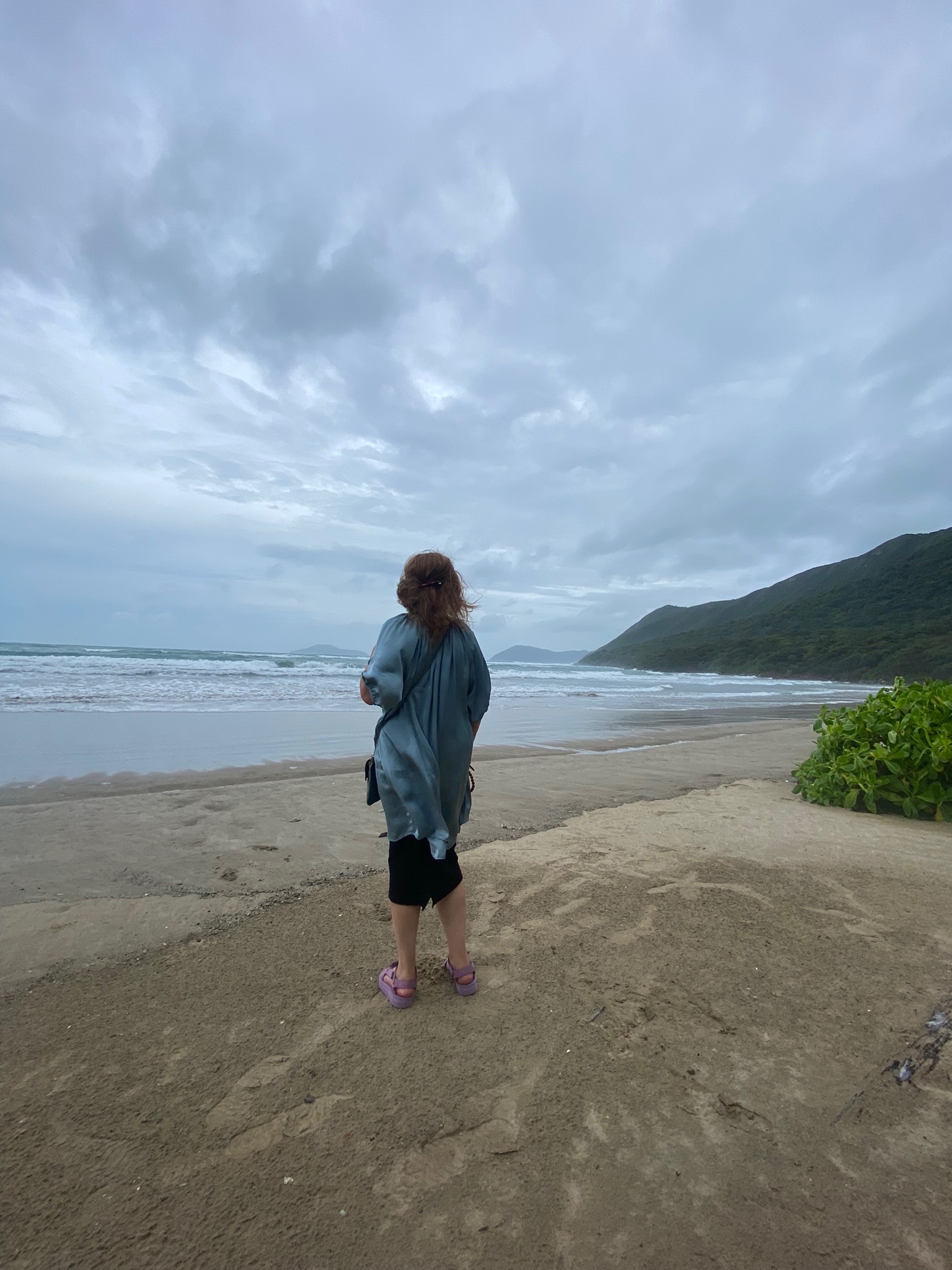Enter the Jungle: Cave trekking in Vietnam

Vietnam is home to some of the largest (and best hidden) caves on Earth - Violet Cloutman hikes, climbs and swims the underground wonders of Quang Binh Province. This article first appeared in issue #3 of East, the InsideAsia Tours magazine. To subscribe for free or download an online version, click here.
“Don’t jump, you could collapse the caves!” I stopped, poised to hop off the rock where I’d been positioning myself to get a better photo of Kim Cave’s main chamber. The ground suddenly seemed rather less solid than it had a few moments ago.
You wouldn’t know it from above ground, but the thickly forested mountains of Quang Binh Province are a brittle honeycomb of caverns and passages, all lying beneath a perilously thin limestone crust. Nothing could seem more permanent than these massive rocky caverns – but they are still constantly growing and changing as old caves collapse and rivers course through solid rock to form new ones. Even the cave where I was standing was once two caverns – until the upper floor collapsed into the void below. Who knew what lay beneath it now, and when the same might happen again? Perhaps I was about to find out...
Quang Binh Province, which lies roughly in the middle of Vietnam’s thin central spine, is one of the richest places in the world for caving, and yet serious exploration only began in the 1990s. Some of the area’s biggest caves – including largest in the world, Son Doong – were only discovered in the last ten years. My own expedition would be taking me through a system not extensively explored until 2012: the Tu Lan Caves.
Looking on a map at the tiny sliver of land that constitutes central Vietnam – a mere 50 kilometers wide at its narrowest point – it was hard to believe that so many caves could have slipped beneath the radar for so long. The reason is accessibility: for years, the region has been under close control by the Vietnamese military, and areas are still peppered with unexploded ordnance left over from the war.
The caves are also well hidden. For example, around 96% of Phong Nha National Park’s 1,000 square kilometers is forested – nearly all of it unspoiled even by the considerable damage wrought during the war. Even the biggest caves often have just tiny openings, easily overlooked by the casual mountain wanderer.
Heading down
A case in point is Paradise Cave in Phong Nha National Park, which we had visited the day before. With a length of 31 kilometers and caverns up to 100 meters tall, it’s one of the largest caves in the region – and easily the most impressive – but its entrance is so small and well-hidden that it went completely unnoticed until 2005. Descending into the depths, dwarfed by the vast scale of its stalactites and stalagmites, I felt like JRR Tolkien’s Frodo venturing into the Mines of Moria. It was a spectacular taster of what was to come.
Elsewhere beneath Phong Nha’s forests lurks the biggest cave in the world: Son Doong. This cavern is so enormous that it has its own ecosystem and climate, sheltering a jungle of trees up to 30 meters in height. Its main chamber could accommodate a 40-story skyscraper with room to spare, and it’s said you could fly a Boeing 747 straight through it – although it isn’t recommended.
Sadly, access to Son Doong is restricted to a few visitors per year and, at USD3,000 a pop, it’s an expensive tour. Luckily, as I would soon find out, some of the largest and most beautiful caves in Quang Binh Province are much more accessible – as long as you don’t mind a bit of hiking.

Hiking to Tu Lan
One small step…
Our trek to the Tun Lan cave system began in the village of Tan Hoa, 70km outside Phong Nha National Park. Here we listened to a briefing from our trekking guides, Tha and Lam, before strapping on our boots and heading out.
The scenery was stunning from the very beginning. Glittering rivers snaked along flat, green valleys while towering, jungle-clad mountains soared all around us. Children cycled past, cows grazed in the fields and the only disturbance was the odd passing motorbike (it’s Vietnam; they’d take motorbikes to the moon if they could). I could hardly imagine a more idyllic setting.
But despite its peaceful appearance, life in Quang Binh Province is far from easy. The area suffers from extremes of weather: in summer it can be blisteringly hot and dry, while the rainy-season floods turn the scenery into a sort of inland Halong Bay. Later in the trek, Lam pointed out a watermark on a rock – the high point of the floods in 2010. In that year, the water reached 12 meters above ground level, submerging buildings and washing away cattle. In the cool, comfortable spring weather I found it hard to imagine such extremes.
After half an hour of walking along the flat valley floor we began to ascend into the mountains – where the going got decidedly tougher. We climbed steadily upwards, scrambling over fallen trees and squeezing between boulders, constantly surrounded by close jungle vegetation.
These forests contain a dizzying catalog of flora and fauna, many of them endemic to Vietnam, with new species being discovered all the time. We passed plants with leaves the size of bedsheets, ducked under thick vines that snaked across our path, and stood in the shadow of 500-year-old trees with buttress roots taller than me.
Our guides taught us which plants to avoid – a bush that would bring you out in painful hives if brushed, or a vine with angry-looking thorns that you certainly wouldn’t want to grab hold of. But not all the plants here want to hurt you. Hidden within the jungles of Quang Binh Province are plants that can make you richer than your wildest dreams. One rare tree found here, Lam explained, can fetch many millions of Vietnamese dong due to its use in Chinese medicine.
At lunchtime, we paused for a picnic lunch in a cave overlooking a plateau, surrounded on all sides by wooded peaks. As I looked out over the landscape, I wondered whether much had changed here since the dawn of human history. The whole scene had such a prehistoric air about it that I wouldn’t have been surprised to see a Stegosaurus wander out from among the trees.

Our lunch spot
Wet and wild
Finishing up our lunch of sandwiches and fruit (lugged up the mountainside by our porters, who put us all to shame with their mountain-goat-like agility), we took a while to recoup our energy and admire the surroundings. The cave tunnel where the porters had spread our picnic blanket disappeared into the blackness of the mountain. As one of our party began wandering into the darkness, using his phone as a torch, our guides ushered him urgently back to the entrance, warning him not to explore alone.
After lunch, the trek to Tu Lan became more challenging. We scrambled ever upwards, slipping on slick muddy paths and climbing up rocky stretches strewn with boulders, until at last we arrived at our campsite. Positioned at the confluence of two streams, the site was sheltered on all sides by mountain and forest, a sheer rock cliff towering on one side. At the cliff’s edge gaped a huge opening – the entrance to Ken Cave – with a waterfall pouring forth from its base into a perfect swimming pool, complete with little rowing boats bobbing along its sandy shore. In short, it was as perfect a spot for a campsite as I could imagine.
That evening, we fell upon our nightly meal with gusto – a delicious spread that our porters seemingly conjured from nowhere. I don’t know whether it was the food or mild exhaustion, but the women in the mountains were right: food really does taste better out here.
It wasn’t long after dinner that we retired to our hammocks, all tuckered out and ready for sleep. Tomorrow we would finally be heading underground to the Tu Lan caves.

Dining in the dark
The descent
The Tu Lan cave system is hidden deep in Quang Binh’s dense rainforest. No artful lighting illuminates its rock formations and no wooden walkways or stone-carved steps are there to make your journey easier. Kitted up with lifejackets, helmets, headlamps and waterproof rucksacks, we clambered to the top of the waterfall and took our first look into the gaping mouth of Ken Cave.
As we launched ourselves into the river and began swimming into the darkness (somewhat awkwardly, impeded by our equipment), I felt a thrill of excitement. No tour busses, no chattering crowds; this felt like the beginning of a real adventure.
As the bright mouth of the cave gradually retreated, a deep gloom was replaced by total blackness. Our headlamps illuminated only our immediate vicinity, occasionally glancing off a rock or dancing across the water’s surface to hint at the unknown space around us. Insects flocked to our headlamps, contributing an eerie flickering quality to the light as we each silently wondered what lay ahead – or below.
Penetrating deeper into the cave system, we climbed out of the water and began making our way on foot. We scrambled through narrow gaps and climbed through some tricky passages, where a wrong step would have meant a pretty steep fall. I’m not usually the nervous type, but I have to admit that my heart was in my mouth as I stepped carefully over black cavities, trying not to imagine pointy rocks waiting for me at the bottom. In broad daylight I wouldn't have thought twice, but that is the suggestive magic of the caves: what your eyes don't see, your imagination fills in the gaps. Vast chambers, miles upon miles of tunnels, deep holes that could go to the center of the earth - if recent discoveries here have taught us anything, it's that you can never really know what lies just beneath your feet.
We moved from cave to cave, going from small, almost cozy-feeling grottoes to vast, cathedral-like caverns, as the air temperature dipped from warm to cold and back again. Tha and Lam pointed out interesting rock formations: tiny, delicate 'cave pearls' formed by rocks rolling gently in water pools; long, thin 'soda straws' drooping downward from the ceiling; and the occasional fossilized snail. What moved me more than any of these delicate structures was the sheer magnitude of time involved in their formation. Stalactites and stalagmites typically grow less than one millimeter per year, making some of Tu Lan's formations unimaginably ancient.

Inside the Tu Lan cave system (Photo: Oxalis Adventure)
At the end of the cave system we emerged via a wide opening into the jungle and made our way to Kim Cave, where more swimming and scrambling brought us, via an underground waterfall, to the conclusion of our adventure: a vertiginous climb up a six-meter ladder to a precipice far above. Here the darkness had its benefits, and I was glad not to be able to see the floor below as I made my way gingerly to the top.
As I surfaced, I was surprised to find myself within a few feet of the spot where we'd picnicked the day before, looking out across the fields and forest. Suddenly my guide's earlier warning about the dangers of wandering off into the darkness became clear. They knew that only a few steps lay between our picnic spot and becoming a human pancake. I felt my legs involuntarily wobble and promised myself to always listen to guides - they do know best.
A sedate walk through the valleys brought us back to Oxalis headquarters, where we could have much-needed showers and change into dry clothes. I was muddy, exhausted, but exhilarated. It may have been hard work getting there, but for just a little while, as I made my way through those underground passageways and chambers, I had felt like a real explorer.
The mysteries of this small but dramatic section of caves were now uncovered for me. But then I remembered the gap in the trees, where the entrance to Paradise Cave had lain hidden for all those years. Quang Binh still had so many miles of tunnels and caverns just waiting to be discovered, and that thought made me smile.
Do it: Violet traveled on the Tu Lan Cave Trek, which consists of two days of hiking and one night of camping, and is included on our Vietnam Adventure itinerary. We can also arrange treks to various other cave systems in and around Phong Nha National Park.



